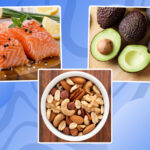Although green veggies like kale, spinach, and broccoli get a lot of buzz in conversation about healthy foods, the less-talked-about green beans are nutritional all-stars, too. “Green beans pack tons of nutrition into a small number of calories,” says Malina Malkani, RDN, owner of Malina Malkani Nutrition and author of Safe and Simple Food Allergy Prevention, who is based in Rye, New York. “Eating a variety of nutrient-dense foods like green beans makes it easier to get all the nutrients our bodies need for optimal health,” Malkani adds.
Green beans, which are also called string beans or snap beans, come in a variety of shades, like yellow, purple, or dotted with red, according to the Washington Department of Public Instruction. They originated from Central and South America, the Oregon Agriculture in the Classroom Foundation notes, and fit into two major types (with a total of 130 varieties): bush and pole beans. Bush beans can grow without a pole while pole beans — you guessed it — need that pole.
If you aren’t able to get your hands on fresh green beans, worry not. They’re just as healthy frozen as they are fresh, the Cleveland Clinic notes, but they advise to not overcook them, which can destroy some of their beneficial nutrients. Speaking of nutritional perks, according to the U.S. Department of Agriculture (USDA), 1 cup of raw green beans contains 31 calories, 1.8 grams (g) of protein, 7g of carbohydrates, 2.7g of fiber, and 0.2g of fat, along with many good-for-you micronutrients.
Incorporating them into your meals is also a cinch. You can add them to minestrone soup, roast them on a sheet pan with olive oil or use them to make a green bean salad, says Christine Palumbo, RDN, a nutrition consultant from Naperville, Illinois. Malkani, who often works with children and picky eaters likes to serve green beans trimmed and raw alongside a nutrient-dense dip. “This is one veggie you can really use in so many ways and get creative with,” says Maggie Michalczyk, RDN, founder of Once Upon a Pumpkin, who is based in Chicago.
Here, discover the top seven perks of green beans, and why you should add them to your next meal.
1. Green Beans Could Help Keep Your Bones Strong
Green beans may help keep your bones strong. Specifically, they are an excellent source of vitamin K, according to the USDA, and this vitamin works by helping make the proteins necessary for building bones, according to Harvard T.H. Chan School of Public Health.
One study found that a diet rich in vitamin K was linked with better physical function and a lower risk of injuries (like hip fractures) from falls in older women. Meanwhile, calcium, which is found in green beans, is essential for bones. According to MedlinePlus, if you don’t get enough calcium in your diet, or if you don’t absorb calcium properly, your bones may become weak or not grow as they should.
2. Vitamin C in Green Beans May Help Support Your Immune System
Eating a diet full of vitamin-C packed vegetables and fruits is one key way to help keep your immune system functioning at its best. And green beans are a good source of vitamin C, according to the USDA. Vitamin C is “an antioxidant that helps support immune health, collagen production, and the absorption of nonheme iron,” says Malkani, and the National Institutes of Health backs up this statement. Nonheme iron is the plant-based iron that green beans contain.
Vitamin C plays a key role in helping fight infections and healing wounds, according to Harvard T.H. Chan School of Public Health. And, as Malkani says, vitamin C works as an antioxidant to help fight free radicals in the body, which can help prevent or combat diseases like cancer and heart disease, the Academy of Nutrition and Dietetics notes.
While vitamin C may not prevent you from getting a common cold, a past review of research does show that consistently eating plenty of vitamin-C rich foods (at least 200 milligrams per day) may reduce the severity and the duration of symptoms of a cold for some people. Also, one meta-analysis found that there was an 8 percent reduction of time spent in the ICU for those people who were given a vitamin C supplement.
3. Green Beans Can Help Keep You Full (and Regular!)
Most Americans aren’t getting enough fiber in their diets, according to the American Society for Nutrition, but you can up your intake with green beans, which are considered a good source of fiber, according to the USDA. And fiber has numerous benefits. “Fiber is an underconsumed nutrient that helps the body by enabling it to feel fuller for longer after eating, and stabilizing blood sugar levels,” says Malkani.
According to the American Heart Association (AHA), you can eat a large amount of green beans and feel full with little risk of overdoing it, which makes this food a perfect side dish for meals, including Thanksgiving.
According to Mayo Clinic, fiber provides volume to contribute to that satiated feeling, and it takes longer to digest than low-fiber foods. Plus, high fiber foods like green beans tend to be lower in calories than those devoid of fiber. Thus, a high-fiber diet may also potentially contribute to weight loss, Mayo Clinic notes.
Fiber has other health perks. “Dietary fiber can help reduce blood cholesterol and blood sugar, as well as keep your digestive tract running smoothly,” says Palumbo. The Centers for Disease Control and Prevention (CDC) notes that fiber can help you stay regular, too.
4. Green Beans Contain Minerals and Other Nutrients That May Help the Heart
That good-for-you fiber that green beans contain provides heart-healthy perks like lowering triglyceride and cholesterol levels, according to the CDC. But these little green dynamos also contain heart-healthy vitamins and minerals, like potassium (per the USDA). “Potassium helps to reduce your blood pressure,” explains Palumbo. One study found that there was a link between a diet high in potassium and a lower blood pressure in women specifically. These findings also suggest a diet rich in potassium may help reduce the negative effects of a high-sodium diet.
Green beans also contain a type of vitamin called folate, according to the USDA, which is another heart helper. According to Harvard Health Publishing, folate may lower your odds of having a stroke. Folate, Harvard explains, can help dismantle homocysteine, a certain type of amino acid that may harm the arteries’ inner walls. One study found that folic acid supplementation lowered the odds of stroke in patients with cardiovascular disease. While green beans won’t give you all your folate needs for the day (or give you as much as a supplement), it can boost your heart health, the Cleveland Clinic notes, especially when combined with other healthy lifestyle habits like eating lots of other vegetables and fruits as well as exercising.
5. Phytonutrients in Green Beans Are Antioxidant All-Stars
You’ve probably heard the nutritional buzzword “phytonutrients” thrown around before, and there’s a good reason why people are talking about them. Phytonutrients may lower your chances of developing a number of different diseases, like arthritis, diabetes, cancer, Alzheimer’s disease, and cardiovascular disease, according to one review. Those authors note that green beans contain a number of phytonutrients, such as phenols, carotenoids, and flavonoids, which work like antioxidants (and anti-inflammatory helpers) in the body.
So what are phytonutrients anyway? The National Agricultural Library explains that they are compounds created by plants that help the body. In particular, these compounds work as antioxidants to fight “oxidative stress,” which is when the body produces too many substances (called free radicals) that can harm cells and lead to chronic diseases, the National Institutes of Health notes. Too much supplementation of antioxidants can be harmful, though, they note, which is why it’s so important to get your antioxidants through food sources (like green beans!). “Including green beans or other antioxidant-rich fruits and vegetables can contribute to your overall health and reduce the risk of chronic diseases,” says Michalczyk.
What’s more, vitamin C, which green beans are a good source of, acts as an antioxidant, according to Mayo Clinic, also helping to protect your cells from free radicals.
6. Green Beans Might Help Your Gut Microbiome
The fiber in green beans helps keep your system running smoothly, yes, but the digestive benefits of green beans don’t end there. According to the Cleveland Clinic, the fiber in green beans can also benefit your gut microbiome, which is made up of tiny organisms that help you digest food and take in nutrients. “Fiber contributes to the good bacteria in our intestines and optimizes digestive health,” says Malkani. In particular, the microorganisms “eat” the fiber, contributing to their proliferation.
For example, one study found that a high-fiber diet can increase gut diversity. That’s important because a diverse gut is a key factor in a person’s overall health, according to the researchers.
Also, green beans contain pectin, the Cleveland Clinic notes. This gel-like starch, which is a specific type of fiber, they say, helps support the lining of the cells in your intestines, lowers the odds of bacterial infections developing, and promotes the important diversity of your gut bacteria.
7. Green Beans Could Help You Feel More Energized
The fictional character Popeye ate his spinach for extra energy and strength. And green beans, like spinach, contain the ever-important mineral iron that’s key for preventing fatigue. “Iron is an essential part of hemoglobin, which carries oxygen to muscles,” says Palumbo, and is a protein found in your red blood cells, Mayo Clinic notes.
One study found that a low dose of iron supplementation could help with fatigue. While green beans will only provide some of your iron needs for the day, you can still meet the rest of your daily requirement through food (eating things like poultry, seafood, nuts, and beans, per Harvard T.H. Chan School of Public Health) and skip the supplement.
Also, green beans can help you meet your daily protein goals (they have about 2 g per cup of raw veggies). “Often, we forget that vegetables do contain some plant-based protein,” says Michalczyk. They contain carbohydrates (about 7g) per cup raw, per the USDA, too, and both of those “macronutrients” can help provide you energy for the day, per the M.D. Anderson Cancer Center. One past study even found that eating a protein-rich diet could improve sleep in overweight and obese adults (another potential energy win!).
This content was originally published here.



















